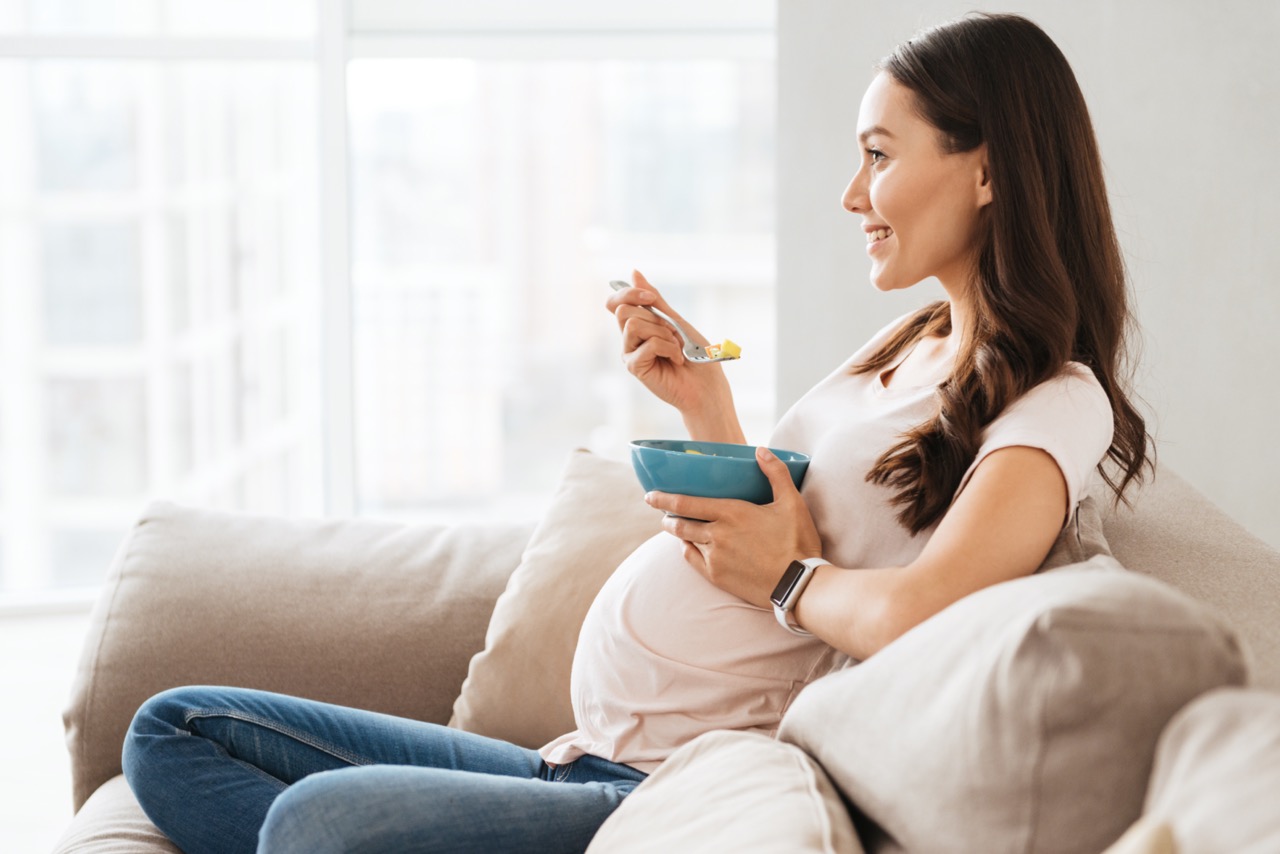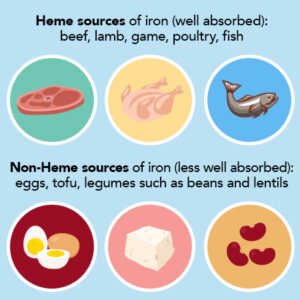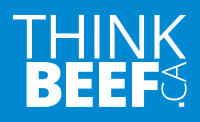sponsored
8 min Read
Iron For Pregnancy

October 16, 2023
sponsored
8 min Read

October 16, 2023

Expecting a Baby? Time to Increase Your Iron Intake.
Iron is vital for a baby’s development, yet many moms-to-be are iron-deficient.
When women become pregnant, their iron needs jump by 50 percent—from 18 mg a day to 27 mg a day—and for good reason: Iron is vital for a healthy pregnancy and a healthy baby. Yet more than 50 percent of pregnancies are affected by low iron, and 25 percent are complicated by severe iron deficiency, according to a study of more than 44,000 pregnancies in Ontario. If you’re pregnant or planning to be, getting enough iron needs to be a key focus.
You may already know that iron plays a key role in the creation of red blood cells. It also plays a vital role during pregnancy. When you’re expecting, your blood volume expands by almost 50 percent, in order to transport oxygen to your growing baby.
And here’s another key reason why you need more iron when you’re expecting: You’re building your baby’s iron stores for their first six months of life—enough to last until they can start eating iron-rich solid foods.
Iron is also critical for a child’s development, including brain development, and for the growth of a healthy placenta. One research study found that babies who did not receive enough iron in utero had lower iron levels at nine months of age, increasing their risk of iron deficiency. During a child’s infancy and toddler years, iron deficiency is associated with several issues, including poorer motor function, slower speed of processing and increased social dysfunction. See Iron for Baby to find out more.
Many women of child-bearing age have low iron—almost one-third in fact, according to Health Canada’s new estimates. If you’re iron-deficient and become pregnant, your iron needs might be even higher than 27 mg/day (this is why it’s important to always discuss individual iron needs with your doctor). Reversing low iron can take months, even with supplements, and that may mean you don’t have enough iron for you and possibly your baby. It’s much better to avoid becoming iron-deficient in the first place.
Recent Canadian research shows that eating red meat like beef is the strongest dietary predictor associated with better iron status in women.
What happens if you don’t get enough iron while you’re pregnant?
| Signs and symptoms of low iron: | Low iron increases the risk of the following: |
| Exhaustion or fatigue | Postpartum depression |
| Dizziness | Giving birth prematurely |
| Irritability or depression | Low birth weight |
| Trouble focusing | Maternal and infant mortality |
| Heart palpitations | Impaired immune function |
| Shortness of breath | Baby born with low iron stores |
Because pregnant women aren’t routinely checked for low iron, consider asking your doctor to check your iron level, especially if you’re vegetarian, you eat little red meat or you have symptoms of iron deficiency. Low iron should be taken very seriously, especially given that it can cause irreversible developmental delays in babies and ongoing problems in childhood.
Eat iron-rich foods every day
Eating iron-rich foods is vital for building your body’s iron stores and supporting a growing baby. To make the most of your meals, it helps to understand which foods offer the most iron. The type of iron matters, too—one is much easier for our bodies to absorb than the other.

Two kinds of iron: heme and non-heme
Did you know there are two types of iron? If you’re trying to increase your iron levels, it helps to know the difference.
Heme iron is found in meat, fish and poultry. Non-heme iron is found in eggs and plant foods like spinach, lentils, tofu, and enriched pasta, cereal and breads. Heme iron is much more efficiently absorbed by the body (15 percent to 35 percent absorption) than non-heme iron (2 percent to 20 percent absorption). That means foods like spinach or enriched bread, for example, may seem to have a good amount of iron, but your body absorbs very little of it. If you’re pregnant or planning to become pregnant, you may want to eat more foods that contain heme iron, especially red meat like beef, which is the only dietary factor associated with better iron status in women.
As for non-heme iron, you can boost its absorption by eating it along with foods that contain heme iron—a tactic known as “food synergy.” Adding meat, poultry or fish to a meal can increase the iron absorbed from non-heme iron by 150 percent. Combining non-heme iron with foods rich in vitamin C—such as citrus fruits, strawberries, dark green leafy vegetables, broccoli, melons, potatoes and bell peppers—also increases iron absorption. Here’s a delicious recipe that does both, this Moroccan Meatball with Herbed Slaw nourish bowl contains beef (heme iron) and beans (non-heme iron) with cabbage and tomatoes (vitamin C).
If you’re a vegetarian, the iron you consume is only non-heme. You’ll need to eat almost double the recommended amount, because of non-heme iron’s lower rate of absorption.
What about iron supplements?
Health Canada recommends pregnant women take a daily multivitamin that contains 16 to 20 mg of iron, in addition to planning meals based on Canada’s Food Guide. Talk to your physician to find out how much iron is right for you, as well as how to manage the possible side effects of taking iron supplements, including nausea, vomiting, cramping and constipation.
Even when taking supplements, remember, it’s important to eat a healthy diet that includes iron-rich foods. Supplements are just that—supplements, not foolproof insurance against a low-iron diet.
More ways to boost iron intake during pregnancy
Getting enough iron every day takes some planning. Here are several strategies to get more iron from your diet:
Author: Carol Harrison, Registered Dietitian
Find out more:
References:
Sponsored by: Canada Beef
